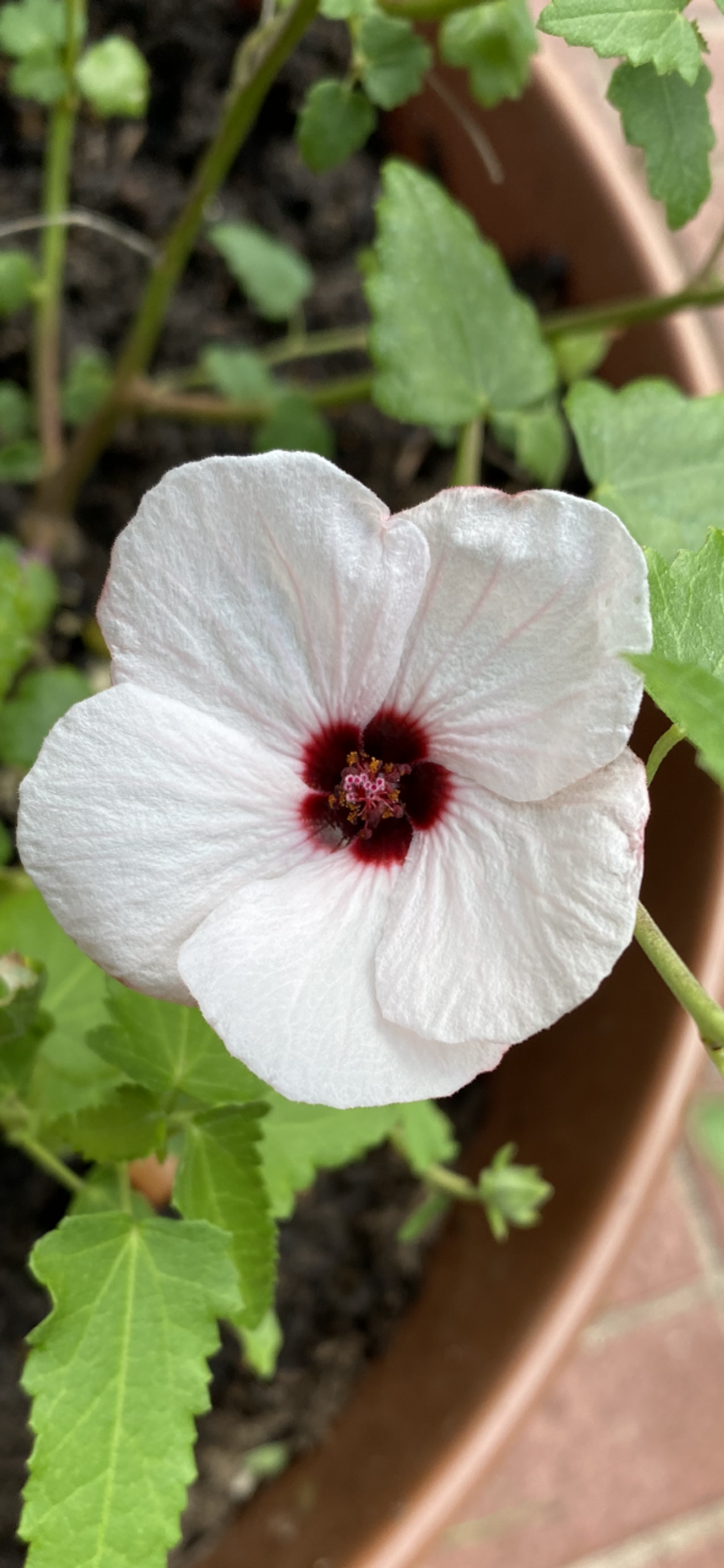Even though we all expect our gardens to slow down significantly this time of year, July 2022 seems to have halted most natural growth. It’s no surprise that only the most heat and drought tolerant summer crops have been somewhat productive in the vegetable gardens. In my backyard garden, okra is still the star.
If you are looking for more plants that can take the heat, check out the mallow family for both ornamental and edible options. Mallows include okra, cotton, Turk’s cap, roselle, Rose of Sharon, hibiscus and rock rose. All have similar leaf shapes and delicate blossoms with five petals that resemble crepe paper.
Mallows do really well in Texas, and they love our hot summers. Mallows are herbaceous perennials. They die back when it gets too cold but return when it warms up in the spring. Mallows thrive with minimal care and many of them well with little water.
Turk’s Cap is especially drought tolerant and thrives in our black clay soil. Turk’s Cap is a big, leafy green plant that puts out one-inch-tall bright red flowers. From a distance, the flowers look like rose buds, but up close they resemble tiny red turbans.
Turk’s Cap can grow to 36 inches wide and spread more than nine feet. It takes sun and will tolerate shade. All parts of the plant are edible, including the bright red, flat fruits that develop in the fall. The flowers are popular with blackchinned hummingbirds, which are migrating south through Central Texas now.
Rock Rose, also called rose mallow or rose pavonia, is another exceptional mallow that grows well in the worst of summer’s heat. Rock rose is a shaggy perennial that grows to three feet tall and has small, two-inch flowers that resemble its mallow cousin–tropical hibiscus.
Rock rose is very showy and puts out lots of blossoms from spring and steadily until the first frost. Pavonia lasiopetala is a neon pink variety that is native to the Texas Hill Country where thrives in thin, rocky soil. This electric pink showstopper blooms best in full sun but can tolerate a bit of shade.
If you prefer a softer color palette, look for Pale Rock Rose, Pavonia hastata. Pale Rock Rose is soft, light pink with a burgundy eye. The petals are delicate like tissue paper and have pink veining. The pale rock rose is just as drought tolerant as the hot pink one, but it’s slightly colder tolerant. During mild winters, it will stay evergreen and not die back. Years when the winters are normal, it will die back with the frost but return in the spring.
Roselle is another heat loving mallow that deserves space in your garden. Also called Flor de Jamaica, it has cream or pale pink flowers with deep burgundy eyes. The leaves are deep green with burgundy veining.
Roselle develops an unusual calyx that is harvested for tea and agua fresca. The calyx is the part of the flower that surrounds the flower bud before it opens. The calyx is like a small leafy cup between the petals and the stem. On most flowers the calyx is green. On roselle flowers the calyx is burgundy, and it’s thick and fleshy.
Roselle is a slow growing plant and can take four to six months to develop calyces. It’s too late to start roselle from seeds this year, but transplants will allow you to enjoy a small harvest this fall. Look for roselle at local independent nurseries.
With 25 years of backyard gardening experience, Julie is a plant and nature enthusiast. She lives in Taylor and hosts the “Plow & Hose Organic Gardening in Central Texas” podcast and radio show that airs on KBSR, Black Sparrow Radio every Saturday and Sunday at 9 a.m.





